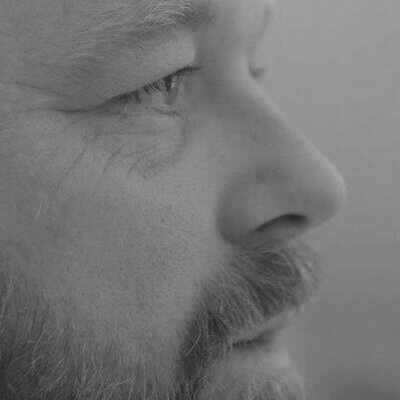I believe in the ongoing need to educate yourself from the best in the business so when an opportunity came up to attend a Marketing & Business conference for a ridiculously reasonable price I bit the bullet and bought a ticket.
I was very happy I did.
Three of the six speakers were excellent and not there to sell you their training product but were focused on actually providing value to the crowd.
The three people were:
- GARY VAYNERCHUK, President and CEO of Vayner Media a Social Media and Marketing company with an annual turnover in excess of $150 million.
- JODIE FOX, founder of shoes of prey, a business where you can go online and order a specific pair of shoes that you want for you. Specific shape, fabrics, styles, whatever. It’s incredible. And they are all custom made for the purchaser. So it’s like they’ve digitized the old school cobbler.
- JANINE ELLIS, founder and owner of boost juice and a whole number of other businesses.
So this is a wrap up of my five biggest take aways from these excellent leaders in business. These five things were common across all three presenters. All very different industries but the principals that underpin setting up and maintaining a business are the same. As creators we need to understand that.
These principals do not mean you are selling out to the man. They are processes and systems that support you to do what you love and grow things to do it more often.
Number one: TEST SMALL
All three talked about testing things in your market and playing with ideas and, and going out there and having a go but not overextending yourself.
Making sure that whatever it is that you want to test, test small.
Gary talked about Facebook ads and he thinks that Facebook and Instagram are the place to be in the next 12 to 36 months. It’s still very, very lucrative there and that it’s very under-priced and particularly in Australia. Very under-priced. He suggests that the best way to learn is by tasting it yourself and working out how to get your message across in that platform.
Janine and Jodie both talked about different things that they tested in their own business. Things that worked, things that didn’t work, but because they tested at a rate that they could actually accommodate, they didn’t overextend and ruin their business through that testing.
Test small and test often.
For us as creators what does it mean to test small?
Well, I’ve seen in my time as a judge on the Brisbane Theatre Awards so many scripts that were just not ready. Stories that just didn’t make sense. I’ve seen a lot of short films come across my desk over the years that just weren’t ready. Table reads, staged readings, small development showings, asking fellow creators to review it and provide feedback of a work and being open to honest feedback are ways to test and test small.
The same applies to other creative works as well. Find a cost free or low cost way to get your work out in front of people to gauge the response – negative response might not mean that it’s bad work, it may mean you are putting in in front of the wrong audience. So don’t always think about the feedback in terms of the work itself, but balance that by taking into account, who you are presenting it to and how you are presenting it. All of those things play into the ability to build a business out of our work.
Number Two: BACK YOURSELF
I have become the biggest believer in this.
All three talked about moments that came where somebody that entrenched in the industry they were looking at, somebody that had a perceived position within that industry, told them that they wouldn’t make it, that it would fail, that their idea wasn’t going to work because of how things had always been.
All three were very disruptive to the industries they are in and completely took things in a new direction and were successful because they put in the work. They had research and data to support their ideas and knew the consumer landscape enough to go for it.
It wasn’t said but something that came to mind is the quote from Henry Ford:
“If I’d asked people what they wanted,
they would’ve told me faster horses.”
Sometimes, when you know what the consumer wants you have to back yourself because it’s not what the industry has noticed is missing from the market.
As artists and creators there is a terrible “Starving Artist mentality’. So many of us feel that if you actively seek to grow and scale sales from your art that you are selling out; and yet many of those same people complain that they would like to make more money from the thing they love, or have a lifestyle where they could do that thing more often.
We need to understand the systems around making money so we can leverage them in our favour.
We need to control them and stop feeling controlled by them.
Number Three: CUSTOMERS COME FIRST
Make sure that you’re providing value to your customer, make sure that you’re really thinking about what it is that they need and that you are providing the outcomes for them.
Ultimately that will lead to you generating income.
If you approach it purely from a concept of trying to make money. Yes, you might make some in the short term, but it’s the long-term relationship that is going to see your business be sustainable and be super strong for a lot, lot longer.
Gary just gives his content away for free all the time. He’s all about the consumer, about us that are taking that information in. He wants to see us succeed because that’s the legacy he gets to leave.
Janine makes sure that her customers are 100 percent happy.
If someone doesn’t like the taste of a juice, she’ll give them a new one. You know, it’s all about making sure the customer’s happy.
Everything about Shoes of Prey was about providing the customer the ultimate purchasing experience.
As a producer I’m creating a product for the consumer. If they don’t like it then I have to ask why. Is it because the work was no good or was it that I tried to put it in front of the wrong audience? I need to own that, work it out, maybe ask for feedback and refine the work. The consumer will tell you how right you are getting it.
Think about that in terms of your artistic practice – what value are you providing around that to grow your relationship with the people who may buy your art?
Number four: SUCCESS IS A SCIENCE NOT AN ART
Understanding that it really does take some calculation, some calculated risk, some analysis, knowing your numbers, to actually understand what it is you’re doing, where your successes are
Analyse your results, the wins, the failures, the successes – understanding the numbers of your business and being able to use that to help you make better decisions later.
This has nothing to do with the creation of your art, or the decisions around what you art is going to be. You are going to create the art that you need or want to make, but when it comes to finding the right audience for that art, the right type of person interested in buying your style of sculpture, or painting, or music, or performance, the more you know and understand your data the easier and easier it becomes to get to those people.
If that’s not something that you’re into or even better, find someone who was really analytical, someone who is really into numbers and get them to do that with you, partner with them so that they can do the analysis and you can do the art, but you need to know that stuff. So dig in. Find someone that can help you out and do that with you or for you as part of your journey.
And the last one, very simply work. The business will succeed with the right work being put in at the right time with the right intent, for the right reasons. You can have all of the testing that you like. You can try all of these things, but if you’re actually not putting in the work, if you’re not actually willing to sacrifice something and spend the hours to build your business, build your brand, you will fail.
Number five: PUT IN THE WORK
 Ultimately, all three of these people are successful because of the amount of effort, the amount of time, and the amount of work that they put into building their business.
Ultimately, all three of these people are successful because of the amount of effort, the amount of time, and the amount of work that they put into building their business.
They all talk about the private messaging they did, the relationship building that they had to do that. They had to go out and meet people.
Janine was talking about taking smoothies to radio stations to try and generate promotion for her business when she had no money to actually market the business.
It’s the legwork, the hours that you put in cleverly. Be Smart about it. Don’t just sit behind a computer and think that you’re working when you’re actually not doing anything to drive your business forward.
What relationships could you be building? Who could you be talking to that might be a partnership that you could help you grow or a sponsorship that maybe doesn’t provide cash but materials you need for creating your art.
CONCLUSION:
That’s it, five simple ideas to help us build the business of our art.
Test Small and Often, Back Yourself, Put Consumers First, Success is a Science, Work!
Sound simple but as we know it’s the last one that makes the others all sing.
If you are interested in more tips and hints around building the business around your art then check out my YouTube show The Business Of Art by clicking here.
BONUS TIP: MAKE THE HARD DECISIONS
Despite early signs of positive take up and strong sales, the scale at which they were operating has been extremely difficult to scale in a manner that would ensure ongoing viability of their operations. Since writing this post Shoes of Prey has ceased to take orders while they re-evaluate their business.
I can not image how hard a decision that would have been. Image all the poeple who worked in the company that now may not have a job. That is a tough call to make, but as someone running a buiness it is sometimes the decision you have to make.
As we push out to grow sales of our artist output in time you may find you hire people, expand exences into systems, software of other thigns that make sense at the time. It is always important to remember the science behind your art and stay on top of results without the emotional attachment. You may need to fire people who are either not performing or cause constant discord in your operations. You may need to scale back in order to build profit.
These decisions are always hard but sometimes have to be made. You can still be supportive of the people involved, but it is always better to cut the cord early and not build resentment or a false reality for those involved.
The right thing is always the right thing, but sometimes, the right thing is hard.


